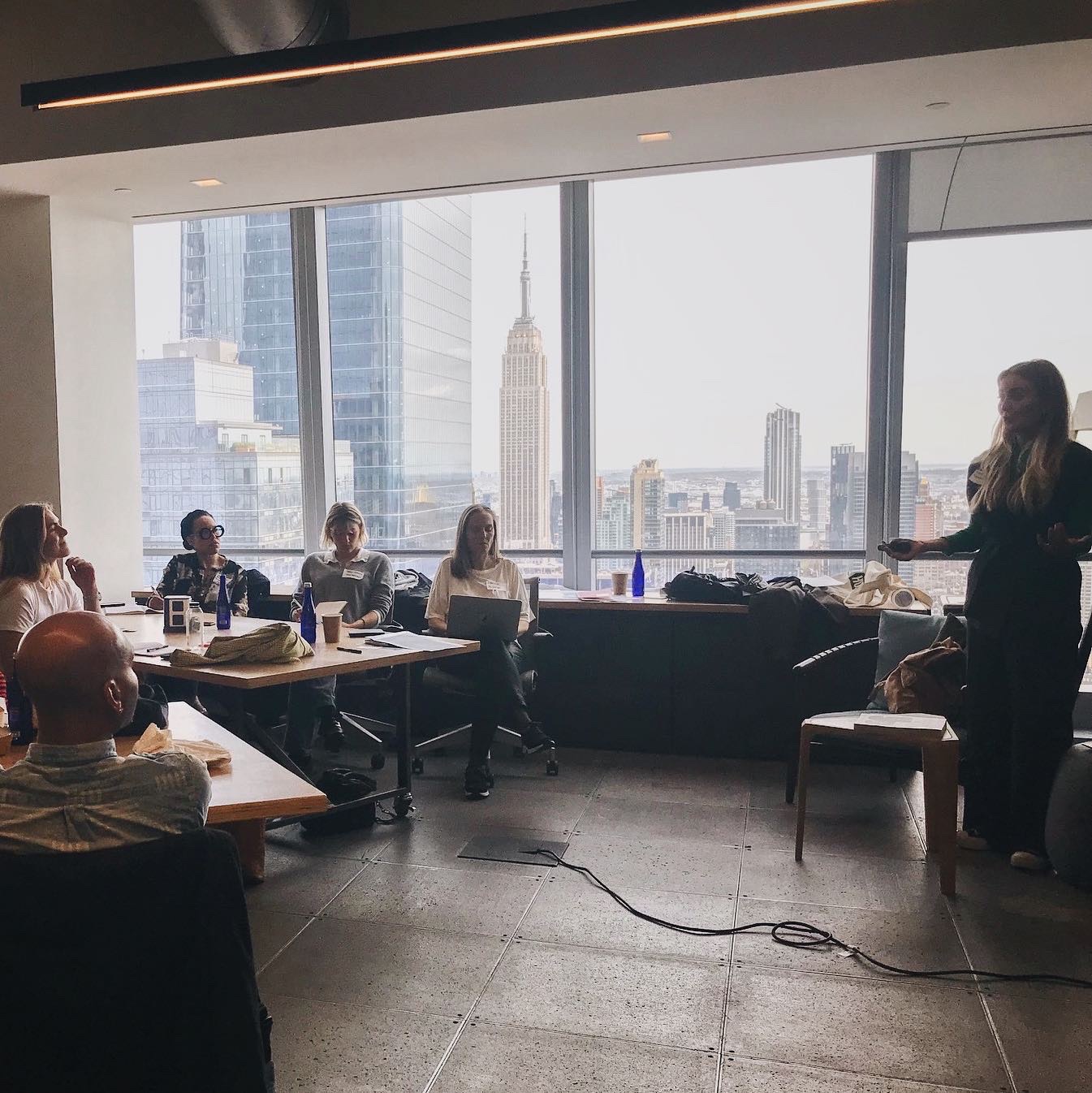BLOXHUB was in New York in May to host a workshop at Circular City Week. We’ve talked to Danish and American participants about their views on circular challenges, the importance of collaboration, and how to move from talking to action.
At the beginning of May, BLOXHUB went to New York to be a part of Circular City Week, a week packed with events about circularity in different sectors and countries. We participated in a panel discussion, reached out to new and existing collaboration partners, and contributed with the workshop: “A Circular Economy in the Building Industry: From Pilot to Mainstream”, with both Danish and international participants.
From the BLOXHUB ecosystem, we brought participants from Steensen Varming, Rambøll, Rockwool, Small Revolution, Gaia Wood Technology, and Henning Larsen, and American participants included representatives from the US Green Building Council, NYC Department of Sanitation, Studio Gang, and Consolidated Brick among many others.
We’ve caught up with two of the participants to hear more about their views on circularity as well as their takeaways from the workshop: Danelle Marqui Brown from By Mnemosyne, a design and humanities consultancy, which helps clients achieve business transformation and sustainability excellence, including work on circularity as a business strategy, and Jeespeer Dalgaard of Gaia Wood Technology, who are launching a product to make wood products last longer, enabling it for circular reuse.
Overcoming Mindsets and Silos
Circular City Week was a great place for thinking big and combining the knowledge of many different sectors and actors to come up with solutions for the circular transition. One of the big questions of the circular transition is where to start – what is the main challenge when it comes to circularity?
”Given the simultaneous convergence of circular discourse, across multiple sectors of industries and regions, it is critical that industries co-develop a baseline framework for the planning, creation, and management of circular infrastructure and support networks. Foresight, ingenuity, and willingness to look at circular challenges from multiple directions can help contributors of the circular transition become more efficient wielders and problem-solvers,” says Danelle Marqui Brown.
She also points to other possibilities for creating awareness and knowledge-sharing on a global and intersectional scale:
“In addition to in-person and digital working sessions, the creation of some form of global digital publication, or awards, that would highlight innovation within circularity could be established. It could highlight and disperse vetted and dynamic examples of circularity in action. Celebrating such examples of circularity in action could be a great source of inspiration, learning, and motivation, forging a creative innovation cycle.”
For Jeesper Dalgaard the conversation on circularity needs to happen on a personal level as well:
“It’s about a change in mindset. We have to change our habits. It often becomes a discussion of politics, theory, digital solutions, and data, but we lack the real products that can help solve these issues. It’s also a question about personal responsibility. We’re good at talking about how the world should change, not so much about how we have to change. When will we start using less? We have to be able to let go of our comfort and convenience.”
He adds that this need for a mindset change was evident at the workshop. One of the assignments was to come up with a circular utopia with no restrictions. But even here – a safe space with no limitations – people were challenged by their restrictive mindset about what can and cannot be done. But fortunately, during the workshop, the mindsets slowly began to change.
Making Interdisciplinary Action Happen
The workshop at Circular City Week is part of our ongoing focus on circularity in the built environment. Building on similar workshops and events we’ve held in Denmark, France, and with Swedish actors, the mission of the workshop is to develop a roadmap that identifies opportunities and barriers and outlines concrete measures, methods, and models that ensure momentum in the scalability of circular transition within construction.
When asked what her main takeaway from the workshop was, Danelle Marqui Brown, swiftly replied:
“Interdisciplinary collaboration is key!”
”The workshop was a collective result of both the facilitators and participants. It was a great learning experience. I left inspired with new thoughts, ideas, and questions, all of which I hope to sift through and apply to my future work and exploration within the realm of circularity,” she says.
Jesper Dalgaard highlights the workshop as a great place to turn talk into action:
“By gathering a lot of different actors around the table who start to ideate and collaborate across different fields of expertise, it becomes a great tool for actually doing something instead of just talking about it. And luckily, people tend to be very open to sharing ideas and knowledge, working across sectors and value chains,” he says.
Jesper Dalgaard also says that he met several people at the workshop from both the Danish and American ecosystems, whom it could be interesting to continue collaborating with: “To keep the work of the workshop going, it’s important to reach out and further collaborate on solutions together,” he says.
If you want to know more about the workshop at Circular City Week or our work on circularity, please reach out to Program Director, Lotte C. Breengaard.



